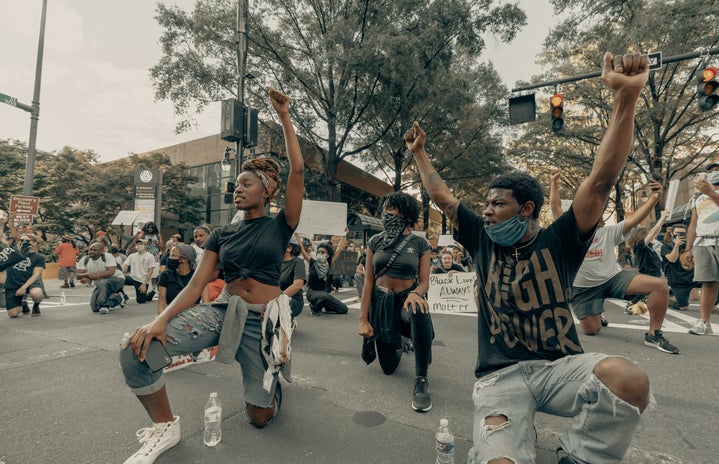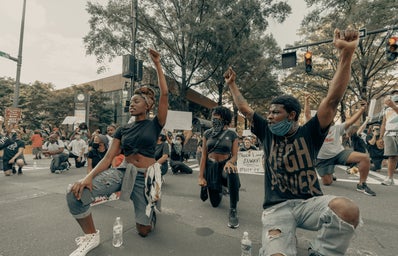On August 9th 2014, 18 year old Michael Brown was shot six times by police officer Darren Wilson, sparking widespread protests. The exact details of the shooting still remain contested, but what can be said for certain is this: whilst one black boy lost his life before he could even make it to college, the white Wilson was never indicted and remains a free man.
It is in these ambiguities that ‘Until the Flood’ finds its home. Written and performed by poet and actor Dael Orlandersmith, and directed by Neel Keller, this one woman show explores the responses to the shooting within the city of Ferguson where it happened. Orlandersmith interviewed between 60 and 80 people from all backgrounds before writing the play, simply just letting them talk. From this, she then built eight fictional composites which she inhabits with incredible ease, simply by donning a single item of clothing.
There’s Connie, the white high school teacher who nervously fiddles with a wine glass as she speaks of an argument that cost her a friend because she found tragedy on Wilson’s side as well as Brown’s. Then there’s 17-year-old Paul, a black high school student who wants to study art history, and simply dreams of making it to adulthood without meeting a similar fate to ‘Mike-Mike’. For me, the most memorable characters were those whose anger and volatility took the foreground. Teenager Hassan’s monologue is punctuated with moments of freestyle, and ends with him describing a desire to stand in front of a redneck who ‘will aim to shoot, and not miss’. By far the most harrowing story is that of Dougray Smith, a white man who explains how he has indoctrinated his son to hate his black classmates, and dreams of making the town ‘purified […] like it must have been once’ – made even more horrendous by remembering that these stories were based on real interviews.
But it is this sense of unflinching exposure that makes ‘Until the Flood’ so powerful. With every character, the focus is on their background, their hopes, dreams and struggles, rather than their explicit politics. Orlandersmith is captivating throughout the entire 60 minutes, embodying each character through subtle mannerisms and the creation of such authentic voices. There is a sense of humanity at the core of this piece, of people presented as they are, without judgement – but that ultimately reveals a society corrupted by deep distrust and misunderstanding, and the failure of white characters to understand their privilege.
Set against a backdrop of teddy bears and candles mimicking the makeshift memorials on the street shortly after Brown’s death, the play closes with a poem by Orlandersmith herself that captures the interweaving of hope and despair for the future of America. One of her aims for the piece was to both invoke and provoke conversation, and especially in the wake of George Floyd’s death and the reignition of the Black Lives Matter movement in the summer, ‘Until the Flood’ is masterful at doing exactly that.
You can watch ‘Until the Flood’ for free on All Arts here.


